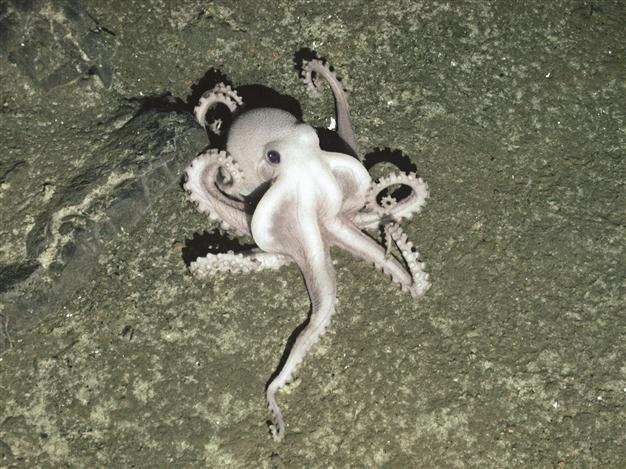‘Lost world’ of sea life thrives in Antarctica
WASHINGTON - Agence France-Presse

This photo shows a pale octopus. The new species was first glimpsed when a robotic vehicle explored the East Scotia Ridge deep beneath the Southern Ocean. AFP photo
A seven-pronged starfish, a mysterious pale octopus and a new kind of yeti crab are among a teeming community of previously undiscovered life on the sea floor near Antarctica, British researchers said.The species, described this week on the online journal PloS Biology, were first glimpsed in 2010 when researchers lowered a robotic vehicle to explore the East Scotia Ridge deep beneath the Southern Ocean, between Antarctica and the tip of South America.
The dark and remote area is home to hydrothermal vents, which are deep-sea springs that spew liquid at temperatures of up to 382 degrees Celsius, and have previously been found to host unusual life forms in other parts of the world.
“Hydrothermal vents are home to animals found nowhere else on the planet that get their energy not from the Sun but from breaking down chemicals, such as hydrogen sulphide,” said lead researcher Alex Rogers of Oxford University.
“The first survey of these particular vents, in the Southern Ocean near Antarctica, has revealed a hot, dark, ‘lost world’ in which whole communities of previously unknown marine organisms thrive.”
Hydrothermal vents were first discovered in 1977 off the Galapagos Islands. The latest discoveries include new types of sea anemones, stalked barnacles and unidentified octopi, and a new kind of starfish. Fish were uncommon, and only seen on the peripheries of the hot zones.
Researchers were equally intrigued by what they did not find -- including many of the giant worms, vent mussels, crabs, clams and shrimp that have been found before at other deep sea vents in the Pacific, Atlantic and Indian Oceans.
















